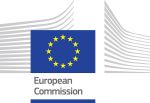*This blog post is part of the Jean Monnet Chair of European Media Governance and Integration series

By Oliver Rathkolb
One of the few European icons one can find in all schoolbooks is a photograph of representatives of the governments of six Member States, in the Capitole’s room of the Horaces and the Curiaces in Rome.
Even within the delegations you will not recognize one woman. This male representation certainly corresponds with the „Zeitgeist“ of the elite of political actors, but does not reflect the political environment of these treaties establishing the European Economic Community (EEC) and the European Atomic Energy Community (EAEC-EURATOM) – based on a customs union and institutions like the Commission, the Council, the Parliament and the Court of Justice.

Until today the message is that wise men like Paul-Henri Spaak, a Belgian Socialist politician and former president of the assembly of the Coal and Steal Community, who chaired the committee drafting the treaties since the Conference of Messina in 1955, have been responsible for treaties concerning the foundation of the EEC.
But the historical evidence demonstrates that the process of institutionalization of the EEC should not be reduced to individuals. Without the pressures of the Cold War and the fear of a Communist takeover of Western Europe and the hidden hand policy of the US the deep wounds of the French-German conflict and two extremely bloody world wars never could be overruled.
This analysis is a precondition to understand why the EEC is not a creation of rationality and/or emotion, but primarily a result of pressures in the geo-strategic confrontation between the Western camp dominated by the US and the Communist East dominated by the Soviet Union. Without the final division of Germany in 1955 – including Austrian neutrality as a side show – the clear trend of a cold peace with two separate spheres of influence and two military pact systems the EEC would not have been established.
One year after the French National Assembly stopped the debate over integrating Western Germany into the European Defense Community Spaak was entrusted with the mandate to negotiate this treaty for a customs union and permanent institutions. The real workers and drafters, however, represented the French-German new alliance: In eight months of intense negotiations based on the papers of Hans von der Groeben and Pierre Uri. Von der Groeben was a German diplomat who had studied laws and economics and advocated the social market economy. Pierre Uri held degrees in philosophy and law and helped as an economist to set up the Marshall plan in France and already was involved in the drafting of the treaty for the European Coal and Steel Community, regulating the production of France, Belgium, Germany, Italy, the Netherlands and Luxembourg. Uri advocated „Planification“, the French type of a planning economy.
When we read the preamble of the Rome Treaty today it is evident that economic integration and growth should serve as the basis for integration as well as social advance.
Taking into account that the EEC needed the Cold War to come into existence and that social changes are based on economic growth only and are not regulated like economic policies by EEC laws we understand the problems of the EC today. As soon as the pressures of the Cold War started to end and the World War II generation left office the EC decision makers like Jacques Delors realized the impact of the growing pressures from globalization and tried a new effort towards real integration by means of a political, economic and security union. Till today the EC is struggling to adapt and adjust to the massive changes of the digital revolution and globalization – but fails to reach the aims of the Delors plan since the geopolitical pressures are pushing nationalistic trends and the social aims of the Rome Treaties of 1955 are not fulfilled by economic growth.


Leave a comment